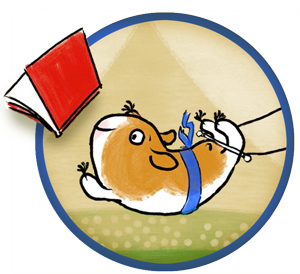By Melanie Ellsworth
A huge challenge for writers, illustrators, and any creator these days is staying inspired and continuing to create. The news is oppressive and scary: Black people being killed by those who are supposed to protect them, a leader who bullies instead of leading, voter suppression, abusive immigration policies, out-of-control wildfires, and a deep fear that the U.S. democratic system is collapsing. And wait — I nearly forgot the worldwide pandemic that is taking lives, keeping people out of work, and forcing us apart (and turning some of our children into anxious, Minecraft/Roblox-playing zombies).
If you skipped that introduction, I don’t blame you. You didn’t need to read about it — you’re living it. So, what to do if you still need/want to create? Here are 20 things that have helped me or fellow creators.
1. Write a 6-word-pandemic memoir.
2. Count everything as writing.
Try a pandemic gratitude list. Top on my list is the extra time I’ve had at home to cuddle with my 14-year-old dog as he gets grayer. Or write to your senators — I bet you’ve got a lot to say.
3. Identify an issue …
… you’re coping with and write/draw about it. I just wrote a picture book on loneliness.
4. Create something for someone else.
My daughter and I made a greenhouse from a kit for her garden-loving grandparents and turned a rock into a guinea pig for her musical aunt.
5. Read picture books for hope and resilience.
Check out the Soaring ‘20s debut books — you’ll find books that bring laughs, joy, hope, courage, and new information. Maybe one will provide inspiration for your next book!
6. Try collaborating with another writer/illustrator …
… like Lindsay H. Metcalf, Keila V. Dawson, and Jeanette Bradley did with their new picture-book poetry anthology, No Voice Too Small: Fourteen Young Americans Making History. David L. Harrison and Jane Yolen worked together on their new picture book, Rum Pum Pum. And Liz Garton Scanlon and Audrey Vernick did on Bob, Not Bob and Dear Substitute. Writing solo is hard enough in the best of times.
7. Play Spider Solitaire …
… when you just can’t write. (Please don’t tell my husband that’s what I’m actually doing in my office.)
8. Share prompts with your critique group partners.
It’s fun and inspiring to watch the different stories birthed from the same prompt.
9. Create in a different genre.
I always love writing picture books, but I’m trying some flash fiction now, too. I can work in shorter chunks of time when it’s harder to focus.
10. Vent to your critique group.
You are not alone!
11. Let crazy things crack you up …
… like a silly turn of phrase or the way your child just pronounced the word, “piano.” Maybe it’ll lead to a story.
12. Take a nature walk.
This keeps me going every day. If you can’t get outside, you’ll probably notice how light moves across your ceilings and floors — like ever-changing art.
13. Reread your favorite books …
… sometimes for fun, and sometimes through a writer’s lens to see what you can learn.
14. Exercise.
Wherever and however long you can.
15. Plant bulbs.
We all need something to look forward to next spring.
16. Introduce yourself to new neighbors.
Maybe they don’t want your home-baked brownies just now, but how about a pumpkin? (Don’t forget your mask!)
17. Rescue a spider from your bathtub.
You’ll feel better and so will she.
18. Take impossible stuff off your list.
I’m not sure why cleaning the vacuum filter seems impossible, but just now, it does.
19. Get professional help if you need it.
You can only create if you are well.
20. Stop reading posts like this one.
Sneaky that I saved that for last, eh? It’s OK if you have to unsubscribe from something, or lots of somethings, right now. No worries. It’ll be there when you’re ready to log back in again!
BONUS IDEA:
If there’s something that helps you be creative, share it with others. We could all use your inspiration!
Melanie Ellsworth is lucky enough to live and write in lovely coastal Maine. Her dog and daughter provide daily inspiration for her picture books. Many school years of playing the clarinet in bands and orchestras led to her first picture book, CLARINET AND TRUMPET, about a woodwind/brass rivalry taken to extremes (Houghton Mifflin Harcourt, 2020). Her second book, HIP, HIP...BERET! (Houghton Mifflin Harcourt, 2020), features a repeating rhyme set to the rhythm of Hip, Hip Hooray, and tells the story of a beloved beret that takes an incredible journey on a series of surprising heads before finding its home. As a former ESOL teacher and literacy specialist, Melanie loves all parts of the writing process, from gathering ideas to revision to sharing books. Visit Melanie on Twitter @melanieells, Instagram @melaniebellsworth, and at her website, www.MelanieEllsworth.com.












